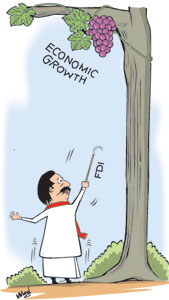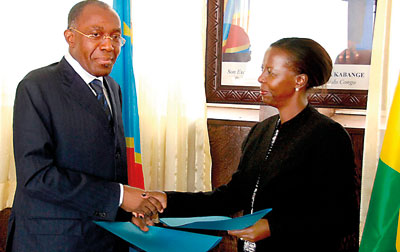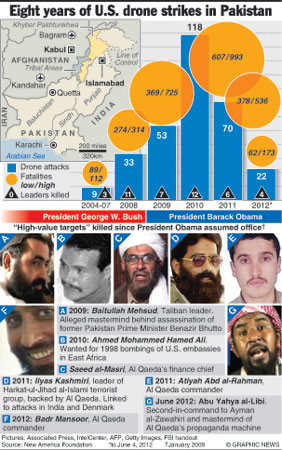Columns
Post-conflict Sri Lanka: External factors, perceptions and misperceptions
By Lasanda KurukulasuriyaAmbassador Nihal Rodrigo, one time Secretary to the Ministry of External Affairs and former Secretary General of SAARC, delivering a memorial lecture at the Lakshman Kadirgamar Institute of International Relations and Strategic Studies on Friday touched on a range of issues lying at the heart of foreign policy challenges faced by Sri Lanka today. The occasion was the commemoration of the second death anniversary of career diplomat Dr. Vernon L.B. Mendis.
The subject was multi-faceted: “Sri Lanka’s post-conflict peace restoration and external aspects.” The attempt to give an overview of the external factors influencing the post-conflict situation and reconciliation process was a challenge on account of the sensitivity of the subject matter as well as time constraints. Being the diplomat that he was, ambassador Rodrigo took it all in his stride. Had time permitted, the note on which he ended in fact could have been the starting point of a whole new discussion. “While all the statements are being made about Indo-China relations, the actual fact is that Sri Lanka is at the middle,” he said.
Referring to the rise of India and China in the context of what is referred to as the ‘Asian Century,’ and against the backdrop of a major strategic push by the US in relation to the Indo-Pacific region (the US ‘pivot’), he spoke of the importance for both countries to work together. Rodrigo quoted India’s External Affairs Minister S.M. Krishna as having told the Indian media that “India-China relations will be the most important bilateral relationship in the 21st century.”
What immediately comes to mind, although Rodrigo did not refer to it, is US President Barack Obama’s statement during his address to the Indian Parliament in 2010, expressing his belief that “the Indo-US relationship will be one of the defining relationships of the 21st century.” The remark had relevance to the US’s shift of strategic focus from West Asia/Southwest Asia to the Indo-Pacific region that is now being referred to the “US pivot to Asia.”
In response to a question in the course of conversation after the event, Rodrigo acknowledged that US concerns over China’s growing involvements in the Indian Ocean region had much to do with the sole superpower’s current preoccupation with Sri Lanka as well. During the talk he referred to what analysts call China’s ‘string of pearls’ strategy, where China is developing centres of influence in strategically located ports in the Indian Ocean – in Burma, Bangladesh, Sri Lanka and Pakistan. The ‘string of pearls’ is seen to be a strategy to contain India. He referred to a quip that it was possibly a ‘necklace of thorns’ (for India).
China tries to convince the world that its rise is peaceful and that it has no expansionist ambitions. But the nature of power is such that this statement is a contradiction, Rodrigo said. “China’s need is for extended access across the Indian Ocean because 80 per cent of its oil imports and much of its exports pass through the Indian Ocean.” China does not seek military bases but wants to establish good relations with countries in the region to have access to ports, he said.
Rodrigo made these observations under the sub heading of ‘Global misperceptions regarding Sri Lanka, and how it constricts our foreign policy’ — being the fifth and last factor he flagged, in discussing the external aspects, beyond Sri Lanka, affecting the country’s post-conflict processes. The other four aspects were, India – a major player in the Asian Century; the UN and the global Human Rights industry; Governance and democratic processes; and the Effect of the Diaspora.
Discussing India, Rodrigo referred to Sri Lanka’s central geographic position in the Indian Ocean. India’s role was extremely complex and even confusing, he said. It was the strategic factor that led Indira Gandhi to nurture the LTTE. India eventually helped defeat the LTTE. India was now deeply involved in a variety of post-war rehabilitation projects in Sri Lanka.
Speaking of the UN’s role Rodrigo said at the time the LTTE was defeated, various critical remarks were made by human rights groups and others focusing on the final stages of the war, when non-combatants became victims. He referred to three important statements made during this period. One was a UN Security Council statement of May 13, 2009, the second was a joint statement by Ban Ki Moon and the Sri Lankan government dated May 23, 2009 and the third a UN Human Rights Council resolution adopted on May 27, 2009.
The UN Security Council statement strongly condemned the LTTE for acts of terror over many years, and demanded that it lay down arms and allow civilians to leave. This was a rather unique consensual statement Rodrigo said. Ban’s joint statement was very clear – it referred to consultation with other stakeholders and reflected cooperation between Sri Lanka and the UN at the time. The UNHRC resolution in its preamble reaffirmed respect for the sovereignty and territorial integrity of Sri Lanka, while condemning the LTTE attacks and the use of civilians as human shields.
Despite these three statements, the critical remarks continue and the LTTE atrocities tend to be soft-pedaled, Rodrigo said. And on June 22, 2010 the UN Secretary General felt he should appoint a ‘panel of experts’ focusing on the last stages of the conflict, which the Security Council and Human Rights Council had already made statements on.
The impact of Tamil Nadu politics was discussed under the third heading, “Governance and democratic processes.’
Referring to the western Tamil diaspora, Rodrigo emphasised that not all its members were LTTErs, but that they stood to gain by showing support. They constituted large voting blocs in their host countries. An informal assessment in 2009 indicated that the reasons for diaspora support for the LTTE included the ’1983 experience,’ peer pressure, boredom, even ‘fellowship,’ being forced to participate for fear of being ostracized, fund collection (which he said still goes on in parts of Sri Lanka), and desire to live abroad. Claiming human rights violations etc projected a picture of Sri Lanka that supported visa extensions. All this was tied up with the question of employment.
A note on Nihal Rodrigo distributed by the LKIISS said he is “currently working on a book on the interaction between Sri Lankan domestic issues and its foreign policy in the current context of the so-called Asian Century.”
comments powered by Disqus
















